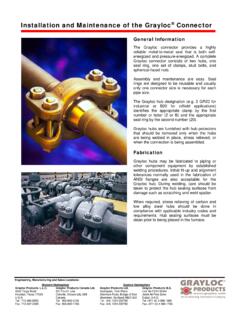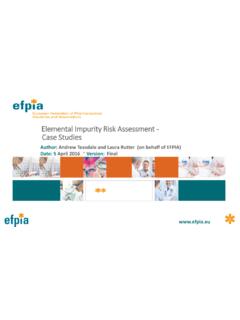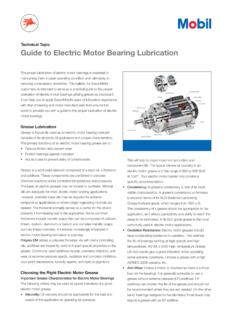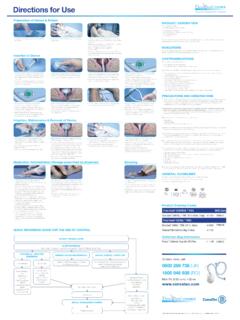Transcription of Saliva Composition and Functions: A Comprehensive Review
1 1 The Journal of Contemporary Dental Practice, Volume 9, No. 3, March 1, 2008 Saliva Composition and Functions: A Comprehensive ReviewAim: The aim of this study was to perform a literature Review about the Composition and functions of Saliva as well as describe the factors that influence salivary flow (SF) and its biochemical : Saliva represents an increasingly useful auxiliary means of diagnosis. Sialometry andsialochemistry are used to diagnose systemic illnesses, monitoring general health, and as an indicator of risk for diseases creating a close relation between oral and systemic : This Review provides fundamental information about the salivary system in terms of normal values for SF and Composition and a Comprehensive Review of the factors that affect this important.
2 Since several factors can influence salivary secretion and Composition , a strictly standardizedcollection must be made so the above-mentioned exams are able to reflect the real functioning of the salivary glands and serve as efficient means for monitoring Significance: Since many oral and systemic conditions manifest themselves as changes in the flow and Composition of Saliva the dental practitioner is advised to remain up-to-date with the current literature onthe : Saliva , salivary glands, salivary proteins, lysozyme, lactoferrinCitation: de Almeida PDV, Gr gio AMT, Machado M N, de Lima AAS, Azevedo LR.
3 Saliva Composition and Functions: A Comprehensive Review . J Contemp Dent Pract 2008 March; (9)3 Journal of Contemporary Dental Practice, Volume 9, No. 3, March 1, 2008 IntroductionSalivary fluid is an exocrine secretion1,2consistingof approximately 99% water, containing a variety of electrolytes (sodium, potassium, calcium, chloride, magnesium, bicarbonate, phosphate) and proteins,represented by enzymes, immunoglobulins andother antimicrobial factors, mucosal glycoproteins, traces of albumin and some polypeptides and oligopeptides of importance to oral health. There are also glucose and nitrogenous products, suchas urea and ,4 The components interactand are responsible for the various functionsattributed to or whole Saliva refers to the complex mixture of fluids from the salivary glands, the gingival fold, oral mucosa transudate, in addition to mucous of the nasal cavity and pharynx, non-adherent oralbacterial, food remainders, desquamated epithelialand blood cells, as well as traces of medications or chemical rest, without exogenous or pharmacological stimulation, there is a small, continuous salivaryflow (SF)
4 , denominated basal unstimulated secretion, present in the form of a film that covers,moisturizes, and lubricates the oral tissues. Whereas, stimulated Saliva is produced in theface of some mechanical, gustatory, olfactory, orpharmacological stimulus, contributing to around 80% to 90% of daily salivary ,9-12A healthy person s mean daily Saliva production ranges from 1 to SF index is aparameter allowing stimulated and unstimulated Saliva flow to be classified as normal, low, orvery low (hyposalivation).8In adults, normaltotal stimulated SF ranges from 1 to 3 mL/min, low ranges from to mL/min, while hyposalivation is characterized by a SF of less than mL/min.
5 The normal unstimulated SFranges from to mL/min, low rangesfrom to mL/min, while hyposalivationis characterized by a SF of less than ,11 However, the values denominated normal for stimulated and unstimulated SF exhibit a large biological variation. Thus, individual SF must be monitored regularly and not determinedas normal or abnormal , based only on ,11 Saliva is critical for preserving and maintainingthe health of oral tissues and has been used as asource of non-invasive investigation of metabolism and the elimination of many drugs. However, itreceives little attention until its quantity diminishes or its quality becomes ,7,11,13At present, Saliva represents an increasingly useful auxiliary means of have made use of sialometry and sialochemistry to diagnose systemic illnesses,monitoring general health, and as an indicator ofrisk for diseases creating a close relation between oral and systemic.
6 Since severalfactors can influence salivary secretion andcomposition a strictly standardized collection must be made so the above-mentioned exams are able to reflect the real functioning of the salivary glandsand serve as an efficient means for monitoringhealth. Therefore, the aim of this literature Review was to investigate the Composition and functionsof Saliva as well as describe the factors thatinfluence SF and its biochemical Functions and CompositionTasteThe SF initially formed inside the acini isisotonic with respect to plasma. However, as itruns through the network of ducts, it ,9,16,17 The hypotonicity of Saliva (lowlevels of glucose, sodium, chloride, and urea)and its capacity to provide the dissolution ofsubstances allows the gustatory buds to perceivedifferent flavors.
7 Gustin, a salivary protein, appears to be necessary for the growth andmaturation of these ,4,13,183 The Journal of Contemporary Dental Practice, Volume 9, No. 3, March 1, 2008 Buffer CapacitySaliva behaves as a buffer system to protect the mouth8,19 as follows:1. It prevents colonization by potentiallypathogenic microorganisms by denying them optimization of environmental Saliva buffers (neutralizes) and cleans the acids produced by acidogenic microorganisms, thus, preventing is important to emphasize biofilm thickness, and the number of bacteria present determinesthe efficacy of salivary loaded residues on the salivary proteins work as buffers.
8 Sialin, a salivarypeptide, plays an important role in increasingthe biofilm pH after exposure to fermentable ,13 Urea is another buffer present in total salivaryfluid which is a product of aminoacid and protein catabolism that causes a rapid increase in biofilm pH by releasing ammonia and carbon dioxide when hydrolyzed by ,5,8,9,24,25 Children with chronic renal insufficiency present with less caries than healthy children, due to the increased levels of salivary , a product of urea and aminoacidmetabolism, is potentially cytotoxic to gingivaltissues. It is an important factor in the initiation of gingivitis because it may increase thepermeability of the sulcular epithelium to othertoxic or antigenic substances in addition to theformation of dental carbonic acid-bicarbonate system is themost important buffer in stimulated Saliva , while in unstimulated Saliva it serves as the phosphate buffer of Tooth EnamelSaliva plays a fundamental role in maintainingthe physical-chemical integrity of tooth enamel by modulating remineralization anddemineralization.
9 The main factors controllingthe stability of enamel hydroxyapatite are theactive concentrations free of calcium, phosphate,and fluoride in solution and the salivary ,28 Protection and LubricationSaliva forms a seromucosal covering that lubricates and protects the oral tissues againstirritating ,19 This occurs due to mucins(proteins with high carbohydrate content)responsible for lubrication, protection againstdehydration, and maintenance of salivary visco-elasticity. They also selectively modulate the adhesion of microorganisms to the oral tissuesurfaces, which contributes to the control ofbacterial and fungal colonization.
10 In addition, they protect these tissues against proteolytic attacks by microorganisms. Mastication, speech, and deglutition are aided by the lubricant effects ofthese ,4,8,19-22 Dilution and CleaningSugars in their free form are present in totalstimulated and unstimulated Saliva at a meanconcentration of to 1 ,5 Highconcentrations of sugar in Saliva mainly occur afterthe intake of food and ,5It is known there isa correlation between the glucose concentration inthe blood and salivary fluid, particularly in diabetics, but because this is not always significant, Saliva isnot used as a means of monitoring blood addition to diluting substances.






